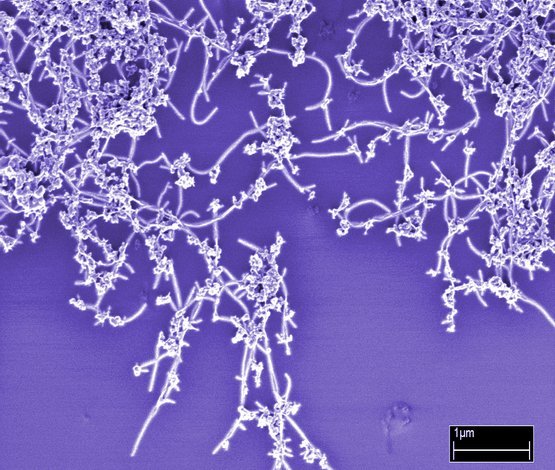Recombinant Mouse IL-1 Receptor-Like 1/IL-1RL1/IL- ...

Details
Species reactivity
Mouse
Estimated molecular weight
62,7 kDa
UniProt number
P14719-2
Origin
Human Cells
Group
recombinants
Latin name
Mus musculus
Shipping condition
Ambient/Room Temperature
Source
Recombinants or rec. proteins
Protein purity
Greater than 95% as determined by reducing SDS-PAGE.
Endotoxin level
Less than 0.1 ng/µg (1 IEU/µg) as determined by LAL test.
Package form
Lyophilized from a 0.2 µm filtered solution of PBS, pH 7.4.
Description
Recombinant Mouse Interleukin-1 receptor-like 1 is produced by our Mammalian expression system and the target gene encoding Ser27-Ala337 is expressed with a Fc tag at the C-terminus.
Storage conditions
Lyophilized protein should be stored at below -20°C, though stable at room temperature for 3 weeks.Reconstituted protein solution can be stored at 4-7°C for 2-7 days.Aliquots of reconstituted samples are stable at below -20°C for 3 months.
Gene
The Interleukin-1 family (IL-1 family) is a group of 11 cytokines, which plays a central role in the regulation of immune and inflammatory responses to infections or sterile insults. Rec. E. coli interleukin-1 for cell culture or antibody production.
Reconstitution conditions
Always centrifuge tubes before opening. Do not mix by vortex or pipetting.It is not recommended to reconstitute to a concentration less than 100 µg/ml.Dissolve the lyophilized protein in ddH2O.Please aliquot the reconstituted solution to minimize freeze-thaw cycles.
Test
Mouse or mice from the Mus musculus species are used for production of mouse monoclonal antibodies or mabs and as research model for humans in your lab. Mouse are mature after 40 days for females and 55 days for males. The female mice are pregnant only 20 days and can give birth to 10 litters of 6-8 mice a year. Transgenic, knock-out, congenic and inbread strains are known for C57BL/6, A/J, BALB/c, SCID while the CD-1 is outbred as strain.
Peptide sequence
SKSSWGLENEALIVRCPQRGRSTYPVEWYYSDTNESIPTQKRNRIFVSRDRLKFLPARVEDSGIYACVIRSPNLNKTGYLNVTIHKKPPSCNIPDYLMYSTVRGSDKNFKITCPTIDLYNWTAPVQWFKNCKALQEPRFRAHRSYLFIDNVTHDDEGDYTCQFTHAENGTNYIVTATRSFTVEEKGFSMFPVITNPPYNHTMEVEIGKPASIACSACFGKGSHFLADVLWQINKTVVGNFGEARIQEEEGRNESSSNDMDCLTSVLRITGVTEKDLSLEYDCLALNLHGMIRHTIRLRRKQPSKECPSHIAVDDIEGRMDEPKSCDKTHTCPPCPAPELLGGPSVFLFPPKPKDTLMISRTPEVTCVVVDVSHEDPEVKFNWYVDGVEVHNAKTKPREEQYNSTYRVVSVLTVLHQDWLNGKEYKCKVSNKALPAPIEKTISKAKGQPREPQVYTLPPSREEMTKNQVSLTCLVKGFYPSDIAVEWESNGQPENNYKTTPPVLDSDGSFFLYSKLTVDKSRWQQGNVFSCSVMHEALHNHYTQKSLSLSPGK
Additional description
The receptors are ligand binding factors of type 1, 2 or 3 and protein-molecules that receive chemical-signals from outside a cell. When such chemical-signals couple or bind to a receptor, they cause some form of cellular/tissue-response, e.g. a change in the electrical-activity of a cell. In this sense, am olfactory receptor is a protein-molecule that recognizes and responds to endogenous-chemical signals, chemokinesor cytokines e.g. an acetylcholine-receptor recognizes and responds to its endogenous-ligand, acetylcholine. However, sometimes in pharmacology, the term is also used to include other proteins that are drug-targets, such as enzymes, transporters and ion-channels.